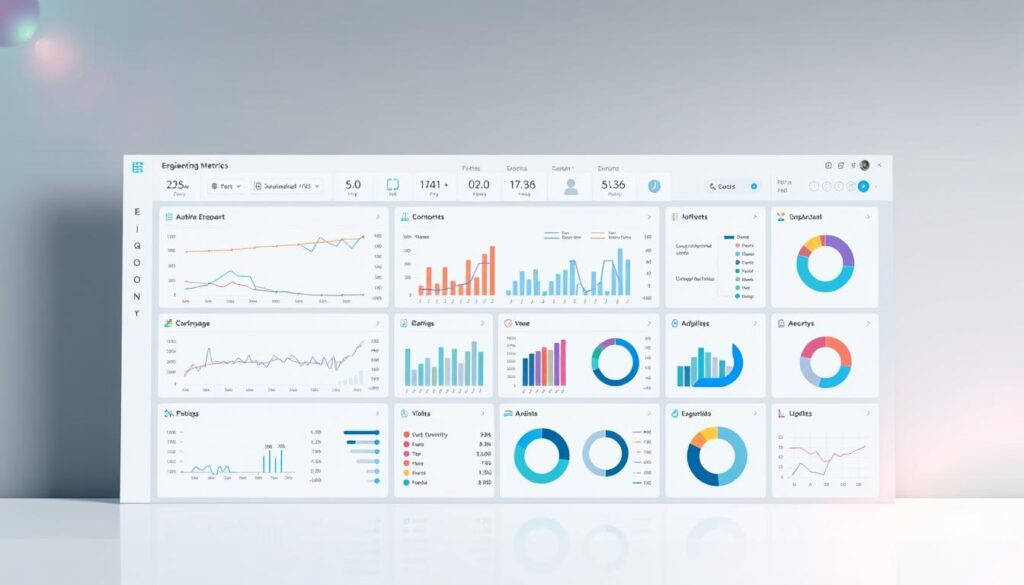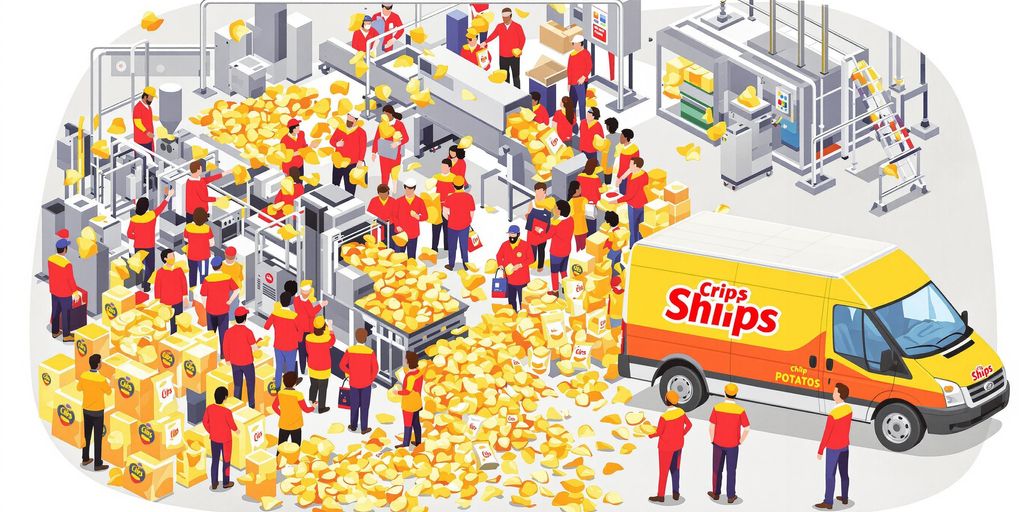Have you ever felt your technical expertise gets overlooked in a crowded job market? I remember spending weeks perfecting a critical infrastructure project, only to realize my resume didn’t capture its measurable impact. That’s when I discovered how strategic tracking transforms invisible effort into career currency.
In engineering roles, your value isn’t just about what you build—it’s about proving how well you build it. Clear metrics help bridge that gap. Whether optimizing code efficiency or reducing system downtime, quantifiable results make your contributions undeniable during salary negotiations or job searches.
This guide shows how to identify and showcase the right benchmarks for your work. You’ll learn to translate complex projects into compelling data points employers recognize. Tools like RoboApply’s AI resume builder and ATS optimizer simplify this process, turning raw numbers into career-advancing narratives.
Key Takeaways
- Understand why measurable benchmarks matter for career growth in technical fields
- Learn to select metrics that align with industry standards and employer priorities
- Discover how documentation tools can transform data into job search assets
- Connect daily engineering work to long-term professional development goals
- Gain strategies for presenting achievements using performance tracking methods
Understanding Engineering KPIs in Systems Engineering
Imagine building a complex system but struggling to explain its value in interviews. Metrics turn abstract skills into career opportunities. Let’s break down how to measure what matters.
- Numbers Don’t Lie
- Quantitative benchmarks track concrete outcomes like deployment speed or error rates. These measurable results prove your ability to deliver technical solutions efficiently. For example, reducing server downtime by 40% shows clearer impact than stating “improved system reliability.”
- Beyond Spreadsheets
- Qualitative assessments reveal skills like troubleshooting under pressure or mentoring junior staff. Tools like peer reviews or client surveys capture these soft skills. A recent study found engineers who document both data types receive 23% more interview invites.
- Future-Proof Your Career
- Leading metrics predict success – think code review completion rates. Lagging metrics analyze past outcomes like post-launch bug counts. Pairing both helps you showcase preventative problem-solving and tangible results.
- Your Personal Evidence Locker
- RoboApply’s resume builder automatically formats these metrics into recruiter-ready achievements. Instead of listing tasks, you’ll demonstrate how your work boosted team velocity or slashed maintenance costs.
Focus on 3-5 metrics aligning with your target roles. Cloud specialists might prioritize scalability improvements, while embedded systems engineers could highlight hardware optimization. Regular tracking helps you spot growth patterns and career-ready stories.
The Role of KPIs in Enhancing System Performance
What separates good engineers from career-accelerating ones? The answer lies in translating technical work into measurable business outcomes. Let’s explore four ways to quantify your engineering impact.

Efficiency and Quality Metrics Explained
- Speed Without Sacrifice
- Cycle time tracks how quickly you deliver working solutions. Pair this with defect density rates to show you maintain quality under deadlines. For example: “Reduced deployment cycles by 25% while keeping error rates below 0.2%.”
- The Silent Success Factor
- Resource utilization metrics reveal your ability to optimize tools and budgets. One cloud engineer used this to demonstrate 40% cost reduction in AWS spending – a story that landed three job offers.
Customer Satisfaction and Team Morale Impact
- Beyond Bug Fixes
- Net Promoter Score (NPS) shows how your work affects user loyalty. Track feature-specific feedback like “85% of users rated our API documentation as ‘extremely helpful’” – concrete evidence of your customer focus.
- The Human Element
- Team velocity metrics become powerful when combined with peer reviews. RoboApply’s AI-powered resume builder helps format these dual achievements into recruiter-ready statements.
“Metrics are the bridge between engineering effort and organizational success” –
UXPin’s engineering KPIs guide
Track 2-3 metrics monthly using simple spreadsheets or task managers. RoboApply’s smart templates then transform raw data into career-advancing stories during job searches. Remember: What gets measured gets promoted.
Measuring Efficiency: Critical Metrics for Systems Engineers
How do you prove your engineering work drives real business value? Tracking the right efficiency metrics turns abstract tasks into career-advancing proof points. Let’s explore four measurements that showcase technical impact.
Cycle Time and Deployment Frequency
- Master Task Velocity
- Track cycle time from task initiation to deployment completion. One engineer discovered 35% delays occurred during code reviews – a fix that boosted team output by 20%. Use tools like Jira paired with RoboApply’s resume builder to transform this data into job-ready achievements.
- Ship Code Like Clockwork
- High deployment frequency demonstrates your ability to deliver updates reliably. Teams releasing daily see 63% fewer critical bugs than monthly deployers. Document specific improvements like “Increased release cadence by 40% without compromising stability.”
Effort Allocation and Code Quality
- Optimize Your Time Investment
- Analyze how much work goes into new features versus maintenance. A recent industry study found top performers spend 60%+ time on innovation. If your metrics show imbalance, propose process changes during reviews.
- Quality as Your Signature
- Measure code quality through peer review feedback time and test coverage rates. One developer reduced critical feedback by 75% using static analysis tools – a win highlighted through RoboApply’s ATS-friendly templates.
Balance these metrics to show both speed and craftsmanship. Track monthly trends using simple spreadsheets, then let automation tools format the data into promotion-worthy stories.
Key Performance Indicators for Systems Engineers: A Comprehensive Overview
How do you turn technical achievements into career advancement stories? Tracking the right metrics transforms your daily work into measurable proof of value. Let’s explore essential categories that showcase your engineering impact.

- Velocity Metrics Show Consistency
- Story points completed and throughput measure your output stability. Teams delivering 85%+ of planned points monthly see faster promotions. Track sprint trends to spot improvement areas.
- Reliability Metrics Prove Maintenance Skills
- MTTR under 2 hours and MTBF exceeding 500 hours demonstrate system resilience. One engineer used these numbers to negotiate a 15% salary increase during reviews.
- Code Health Indicators Matter
- Keep pull requests under 400 lines and merge frequency above 3/week. RoboApply’s resume templates help highlight these standards as evidence of clean coding practices.
- Project Execution Metrics Build Trust
- Release burndown charts showing 90%+ accuracy and 95% project completion rates prove you deliver on commitments. These numbers become powerful interview stories when formatted clearly.
Select 5-7 metrics aligning with your role’s focus. Cloud specialists might prioritize deployment frequency, while security engineers could emphasize vulnerability resolution times. Tools like engineering metrics guides help identify relevant benchmarks.
RoboApply’s cover letter builder turns scattered data into focused career narratives. Input your best numbers, and the AI suggests impactful phrasing like “Reduced MTTR by 58% through automated monitoring solutions” – proof that gets hiring managers’ attention.
Selecting the Right KPIs: Customizing Metrics for Your Engineering Goals
Personalized benchmarks transform technical tasks into strategic business contributions. Your metrics should act as a bridge between daily engineering efforts and organizational priorities. Start by reviewing your company’s quarterly objectives – are they focused on innovation, cost reduction, or user experience?
Three Steps to Strategic Alignment
1. Map technical capabilities to business outcomes: If leadership prioritizes customer satisfaction, track metrics like feature adoption rates or support ticket resolution times. Teams focused on scalability might measure deployment success rates across environments.
2. Balance team performance with individual growth: Use tools like Jellyfish’s engineering KPI categories to identify metrics that showcase both collaborative achievements and specialized skills. For example, track code review participation alongside system optimization results.
3. Automate your evidence collection: RoboApply’s resume builder turns scattered data points into targeted career stories. Input your best numbers, and the AI suggests phrasing like “Improved resource allocation by 30% through automated monitoring” – proof that resonates with hiring managers.
Revisit your metrics quarterly. Shift focus as business needs evolve, ensuring your documented achievements always reflect current organizational priorities. This approach keeps your career trajectory aligned with industry demands.
FAQ
How do KPIs improve software delivery for systems engineers?
Metrics like deployment frequency and cycle time track how quickly teams ship functional code. By monitoring these, you identify bottlenecks in development pipelines and optimize workflows. Tools like Jira or Azure DevOps help visualize progress.
Why is customer satisfaction a critical KPI for engineering teams?
High Net Promoter Scores (NPS) or user feedback ratings reflect whether solutions meet stakeholder needs. Teams using platforms like Zendesk or Pendo tie feature requests directly to sprint planning, ensuring alignment with business goals.
What’s the difference between code quality and code coverage metrics?
Code quality assesses readability and maintainability through peer reviews or SonarQube scans. Code coverage measures testing thoroughness (e.g., 85% unit test coverage). Both prevent defects but target different stages of development.
How do you balance effort allocation with project deadlines?
Track resource utilization rates to avoid burnout. Tools like Toggl or Harvest highlight overworked areas, while sprint retrospectives help redistribute tasks. Prioritize high-impact work using Eisenhower matrices.
Can KPIs negatively impact engineering team morale?
Yes, if metrics like change failure rate are used punitively. Focus on iterative improvement: celebrate reduced incident resolution times or fewer post-deployment rollbacks. Transparent dashboards in Grafana build trust.
What are common mistakes when selecting KPIs for systems engineering?
Overloading teams with too many metrics or tracking vanity indicators like lines of code. Instead, tie 3-5 KPIs—such as mean time to recovery (MTTR)—to specific outcomes like system uptime or compliance audits.


















